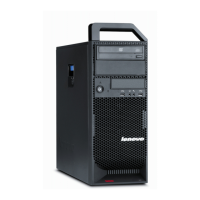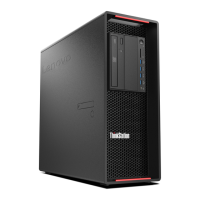What to do if Lenovo ThinkStation C30 does not start?
- KKimberly MillerJul 26, 2025
If your Lenovo Desktop doesn't start, check the following: Ensure the power cord is correctly connected to both the rear of the computer and a working electrical outlet. If there's a secondary power switch at the rear, make sure it's on. Verify that the power indicator on the front of the computer is lit. Also, confirm that the computer voltage matches the voltage available at your electrical outlet.

































